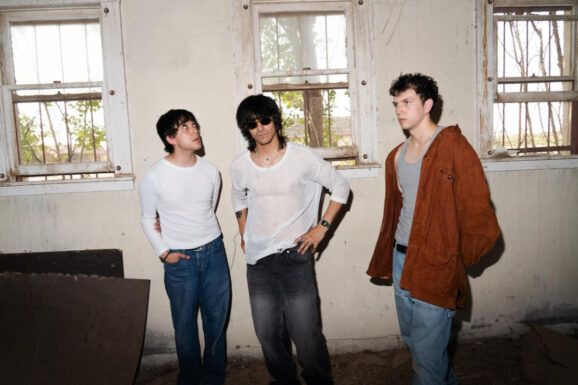If you were to download the tracks from this album, James Carter Organ Trio: Live From Newport Jazz, without any advance information, you might be surprised that each of the five tracks are titled in French. Four are from Reinhardt with one from his contemporary Auguste “Gusti” Mahla. Carter calls it a willful attempt to “give Gypsy jazz a hood pass.” Or, to urbanize it by putting it through his Detroit filter. Don’t worry though. Like most organ trio music, this swings and grooves. Recorded at the 2018 Newport Jazz Festival, with its informed and engaged audience exhorting the trio, Carter indeed transforms Django’s music and makes it more exciting.
Carter, who graces this month’s cover of Downbeat incidentally, is a versatile saxophonist capable of blowing the roof off or caressing a ballad tenderly. He’s as comfortable in an intimate club as he is on a sprawling stage like Newport. His technique at times sounds like his horn is talking with his screeching and squawking sounds coming alongside his usual full-bodied, robust tone. He draws on post-bop, early jazz, jump blues, and avant-garde as if the history of jazz resides in his tenor sax. This is not the first time that Carter has addressed Reinhardt’s music as his widely acclaimed 2000 Atlantic release, Chasin’ the Gypsy did just that. Carter’s style is typically described as “rambunctious,” “funky,” “fiery,” “charismatic,” “soulful,” “powerful,” “gritty” or “R&B-soaked.” Those set of adjectives sound ideal for a tenor player fronting an organ trio and the live setting at Newport only heightens Carter’s expressive playing.
Blue Note President Don Was, a fellow Detroiter, remembers Carter as “a local guy who was blowing people’s minds” on the Motor City scene. He recruited Carter to take part in Detroit Jazz City, a benefit compilation released by Blue Note in 2015 featuring a mix of classic cuts and contemporary offerings. There, Carter’s fiery performance imbues hard-swinging tracks by Kenny Cox, Joe Henderson, Marcus Belgrave, Elvin Jones, Donald Byrd and other Detroit-rooted Blue Note greats, some of whom mentored the saxophonist. “He does seem like a natural for the label,” Was agrees, “and this trio is a timeless Blue Note sound.”
Carter fell in love with organ trios, whether hearing them on the radio or in the background at backyard cookouts while growing up in Detroit. He elaborates, ‘You’d hear Jimmy Smith while somebody’s passing the baked beans and the ribs and all that other good stuff. The organ has always been part of the African-American Diaspora, coming up through the spirituals an on into soul, neo-soul. It’s always been an integral part of the soulful landscape.” Hammond B3 virtuoso and fellow Detroiter Gerard Gibbs, a protégé of Richard “Groove” Holmes, gets plenty of room to stretch out here whether soloing or conversing with Carter’s energetic blowing. The trio’s third important member is the young drummer Alexander White, who has the right mix of old-school shuffles and newer beats, as he adds the youthful fire. One of the best examples is Mahla’s “Melodie au Crepuscule,” where all three shine, especially toward the end where Carter finds every conceivable note on his horn and seemingly creates some new ones too. He does play tenor, alto, and soprano on the album, sometimes using one than one in the same tune.
Carter and Gibbs conceived these versions apparently in brainstorming sessions in Carter’s driveway, ultimately deciding to keep their ears open and incorporate the raw material of common existence. Snippets of Bill Withers’ “Use Me” are in “Melodie au Crepuscule.” In the ballad “Anouman” which follows, they excerpted some lines from Johnny Guitar Watson’s funk tune “I Want to Ta-Ta You Baby.” Strains of John Coltrane’s “My Favorite Things” run through “La Valse Des NIglos,” with Carter on soprano no less. On “Pour Que Ma Vie Demeure” he uses his amazing multi-phonics approach atop Philly soul singer Teddy Pendergrass’ “Turn Off the Lights.”
Organ trios were the focal point of many corner bars in Detroit just like Reinhardt’s gypsy jazz was a “music of the people.” Carter first heard Reinhardt’s music in 1983 on radio veteran Jim Gallert’s Jazz Yesterday on WDET, a program that unveiled discoveries that Carter continues to explore. He likes the delicacy of gypsy jazz but mines its intensity. Yes, intensity is the right word as Carter coaxes sounds out his sax in much the same way as stellar guitarists like Derek Trucks, Hendrix and lesser-known giants of guitar like ninety plus year old George Freeman, who Carter cites for his long sustained notes and little distortions that functioned as gestures saxophonists could adapt and play off of.
In this trio configuration, Carter creates so many different sounds, that it seems as if another saxophonist has joined him. Rest assured this is not the kind of background organ trio Carter referred to when speaking about those Detroit neighborhood cookouts. This is a sizzling live session that demands attention and can stop you in your tracks.








